Art vs Craft Debate in Education: Origins and Impact
Info: 9538 words (38 pages) Dissertation
Published: 23rd Dec 2021
What are the origins of the art versus craft debate, how does it effect Art Education, and what might be the potential repercussions of its continuation?
Abstract
Within educational theory there is an acknowledged conflict between the gaining of intellectual knowledge and the acquisition of practical skills, which highlights the struggle between the vocational and the cultural (Unesdoc.unesco.org, 2018). Is one area of learning ultimately considered of greater importance than the other in the study of art? Why does there continue to be a noticeable division between art and craft, where the teaching of craft skills is perceived to be inferior to that of fine art?
Stimulus
As a student studying for a skills based art degree, I initially wanted to investigate the acquisition of skills in order to make art. I particularly wanted to examine crafts skills, and their connection to fine art. This ultimately became an investigation of the relationship between art and craft, and whether learnt skills are important, or necessary in order to produce art. Inevitably during the course of the writing the direction of the dissertation has altered, according to the research that was carried out.
Soetsu Yanagi said in his book The Unknown Craftsman – A Japanese insight into Beauty:-
‘The first element that conscientious artists should emerge now – is to protect the beauty of craft… They may be compared with moralists in immoral times.’
Contents
Page
Introduction 4
History of Art Education and the Apprentice System 8
Art Schools and the separation of Art and the Artisan 12
The Arts and Crafts Movement – The saving of craft skills 17
Skill based learning – The Importance of craft in art education 19
Call it art and that is what it becomes 22
Art versus Craft 24
Conclusion 30
Bibliography 34
Introduction
According to figures provided in Patterns and Trends in Education, in the 2015-16 entry into higher education of nearly one million, there were around 65,000 fewer applications than a decade earlier. This is despite there being approximately 10,000 more A’ level candidates in 2016 than in 2006 (bstubbs.co.uk, 2018), combined with the desire of successive governments to increase the percentage of school leavers choosing university as their preferred option. Allied to this is a downward trend in part-time learners, with applications falling from more than 250,000 in 2006 to around 100,000 in 2016, with both the recession and fee increases effecting numbers (England, 2018). With fewer potential students selecting higher education, there is an obvious effect on those deciding to study the visual arts (Universitiesuk.ac.uk, 2018).
Analysis of statistics provided by UCAS for the 2017 cycle applicant figures, confirms that overall numbers applying to university have fallen, and this trend is especially noticeable in creative subject disciplines. (UCAS, 2018). The combined area of visual arts, music, drama, dance and creative writing remains popular, attracting approximately 260,000 applications from prospective students for the 2017-18 academic year. These are split between around 170,000 applications from female candidates, and just over 89,000 from males. This is a 2:1 ratio of female to male students, making the student cohort of creative arts mostly female. Applications received by January 2017 were 30,000 lower than the previous year, across all subject areas. Of those, 17,000 can be apportioned directly to the combined arts subjects, more than half of the total number. This faculty area still attracts applications, but the fact that numbers are plunging causes increasing concern, indicating that there is likely to be over capacity, underlining the inevitably of course closures. This coupled with a shortfall in university funding, makes art education look especially vulnerable.
Nigel Carrington, Rector of the University of the Arts London states, ‘There is a complete collapse of funding for universities like this,’ meaning institutions that have recently gained university status. He continues, ‘We have to assume we are being privatised. We will have virtually no public funding by 2015. We have £52m of teaching funding at the moment. We expect all but £1m-£2m of that to have gone by 2015.’ (Batty, 2018). In trying to balance budgets it would be too easy to identify courses that cost more, such as those teaching workshop skills, which require a higher student/instructor ratio, as being the target for closures. These would primarily be craft and design courses, this would subsequently remove the capability of selecting a skill based course to study, and teaching expertise could then be lost. Unfortunately, this has already begun to happen, Falmouth University closed their Contemporary Crafts degree for the 2015 intake, citing, ‘running costs, changing employment trends and a fall in applicants to crafts courses nationally as reasons for the closure’ (a-n The Artists Information Company, 2018).
Before decisions are made about course closures, questions should be asked about why students are not applying. Some of the reason for the fall in student numbers can be attributed to the rise in tuition fees. Peter Higgins, creative director at Land Design Studio, and also a university external examiner, has said, ‘the pressures of tuition fees are kicking in,’ and that, ‘students seem more inclined to study STEM (Science, Technology, Engineering and Maths) subjects at university, as they have more tangible, predictable career options, whereas art and design courses
have less predictable outcomes.’ Because of the changes in secondary education Paul Ring, a senior lecturer in interior architecture at Northumbria University has stated, ‘The Government has moved away from supporting creative subjects quite alarmingly.’ He went on to concede that, ‘because of this rhetoric, 18-year-olds are wondering about the value of creative subjects.’ (Dawood, 2018). However, the number of students choosing to study Art and Design at A’ level increased in the period from 2006 to 2016 by around 1,250 candidates, however of the nearly 43,300 candidates, more than 33,000 were girls, and around 10,300 were boys. The number of girls choosing art had increased by 4000 over the course of the decade, while boys decreased by 1,650. It is hoped that the move away from creative disciplines is not because they are perceived as ‘girls’ subjects, since female candidates outnumber males 3 to 1. (bstubbs.co.uk, 2018).

Table 1. Table 1. Which degree to choose according to possible salary?
Additionally if a student decides to study art and design, their predicted earnings are projected to be less than half of those undergraduates that choose to study either medicine or dentistry. These students pay the same amount for their education as students studying a visual arts degree, but with a far greater chance of a financially secure future. Whilst many factors have to be taken into account when selecting which course to follow, increasingly students are becoming more pragmatic in their choice, and they are opting not to go to university if the possibility of spending more than £50,000 on their education does not make economic sense.
There are also other routes into the arts, such as apprenticeship schemes, or alternate ‘in-employment’ training options. If prospective students are to be encouraged to study art at degree level, tangible transferable skills may have to be taught as part of the learning programme, so that they are better able to quantify why they have chosen to become indebted. The arts seem to be under supported, and there seems to be little to encourage future students, as schools are withdrawing higher level courses in the visual arts, as they do not gain academic recognition in the current political climate. With recent schemes such as the National Ceramic School’s ‘Adopt a Potter’ (Adoptapotter.org.uk, 2018), there is more than a suggestion that an education offered at Art School does not necessarily provide students with the learning that they want, and require to generate income. If applicants could choose courses with transferable skills, where learning was experiential as well as intellectual, would it make a difference, or are the arts slowly being driven out of higher education?
History of Art Education and the Apprentice System
The word ‘art’ derives from Latin via Middle English, denoting skill or craft, and was considered to be something acquired through practice, and not linked to thinking or talent but deemed to be an unconscious process, not equal in the medieval mind to the seven liberal arts, of grammar, rhetoric, logic, geometry, arithmetic, music and astronomy. (The New Encyclopaedia Britannica, 1990).
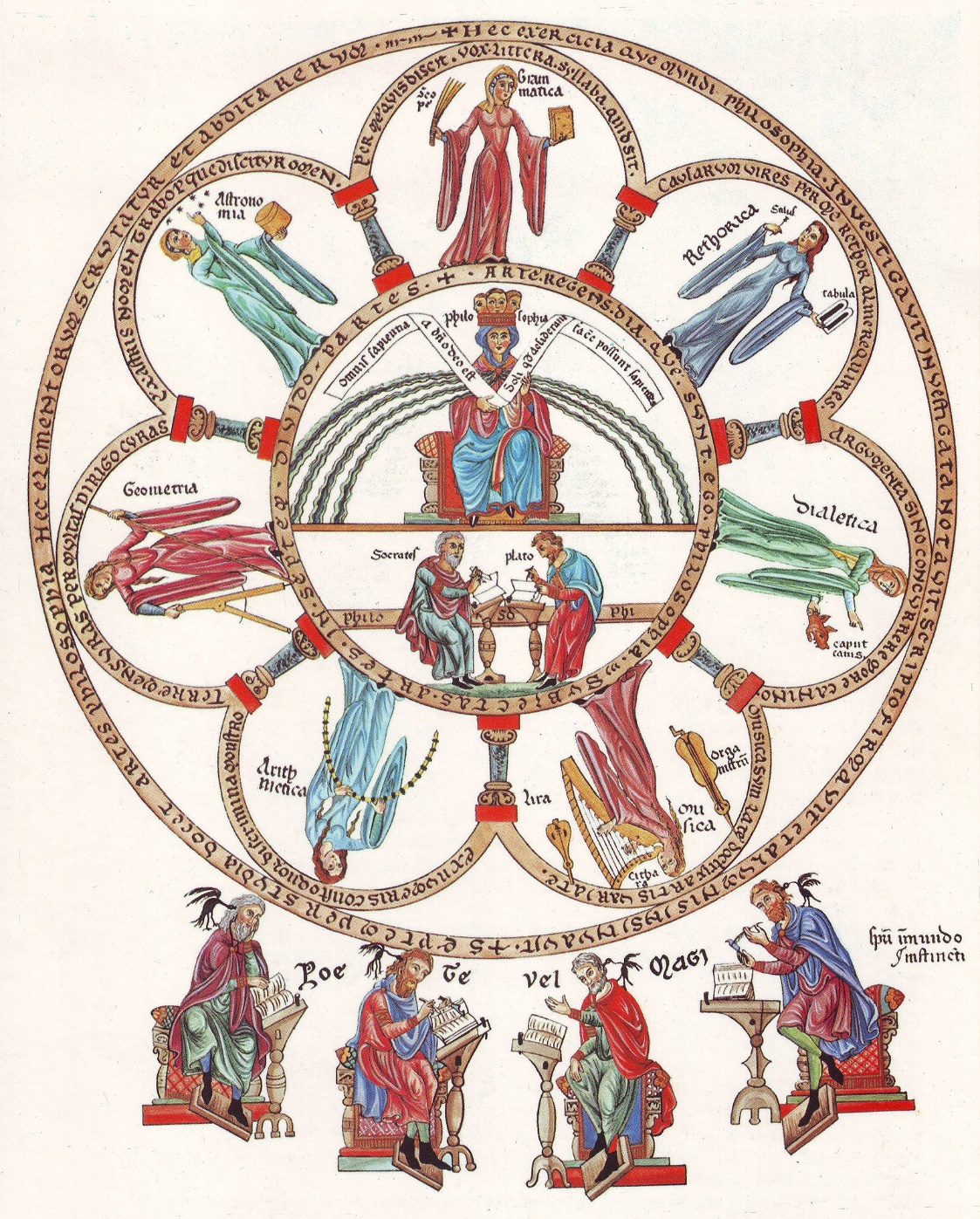
Fig. 1 Philosophia et septem artes liberales (Philosophy and the Seven Liberal Arts), as illustrated in Hortus deliciarum (Garden of Delights).
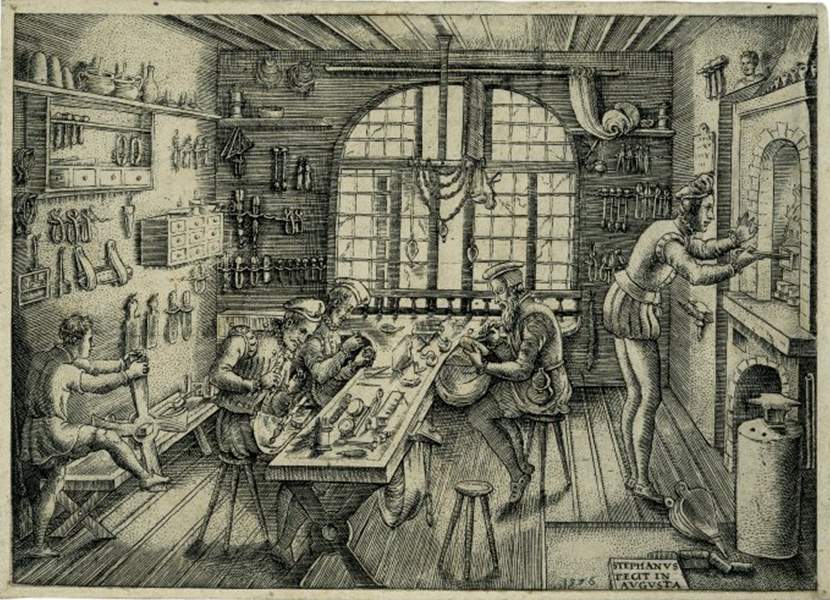
Fig 2. Interior of the Atelier workshop of Etienne Delaune
Celebrated goldsmith of Paris. Date: 1576
A medieval artisan’s workshop would have appeared much the same to the onlooker, whether it had been producing art or artefacts. As a painting or a piece of pottery was looked upon in the same way prior to the early renaissance. This meant that it was regarded as a piece of work, produced by a collective group of craftsmen on behalf of the commissioner of that work. The person who had commissioned the piece was considered to be more important than the workers who had lent their skills in its production, as it had been made to that individual’s specifications, not that of the workers that had been essential in its creation.
It was during the Italian Renaissance that western civilisation first began to place innovation at the core of the creation of art, it was this change in attitude that fundamentally altered the future of the visual arts. At the beginning of the 1400s, the concept of Renaissance Humanism began to gain hold. This was an intellectual movement started in Italy. It encouraged a different perspective by referencing classical literature in order to alter the traditional thinking of the time, this concept later spread throughout Europe.
Leonardo da Vinci (1452-1519), states in the collection, Thoughts of Art and Life
If you say that sciences which are not mechanical are of the mind, I say that painting is of the mind, for, as music and geometry treat of the proportions of continuous quantities, while arithmetic treats of the discontinuous, painting treats of all continuous quantities, as well as the proportions of shadow and light, and the variation of distance and perspective. (Leonardo and Baring, 1906)
Over the course of this era, a division formed between the making of art and of crafted objects. This was further heightened when Giorgio Vasari drew a distinction between the two in The Lives of the Most Excellent Painters, Sculptors, and Architects, written in 1550. His work suggested that those items produced following guild traditions were to be described as craft, and henceforth regarded as artisan made, and accordingly were not considered art. This is summarised by Howard Risatti in A Theory of Craft, he states, ‘craft and fine art were united … until changes began in the Renaissance as fine art … was intentionally shifted to stress its intellectual aspects.’ He added that, ‘Fine art’s sense of being a thing skilfully made of physical material was suppressed so its abstract creative features could be allied with the intellectual aura associated with the written word’ (Risatti, 2007, p116). This interpretation of Vasari consequently become the central tenet used to distinguish these two concepts, and the decision ultimately of what is thought to be art, and what is not. (Vasari, De Vere and Jacks, 2006).
The separation between art and craft did not remove the studying of specific skills in order to become an artist, but detached the learning of particular proficiencies, and labelled them as craft. These consequently became the province of the artisan. An aspiring artist was still taught by another more experienced artist serving as their mentor. They would have been taught in the artist’s workshop, and indentured as an apprentice. Their education would have covered: learning about making pigments, preparing canvases and about how to draw correctly, all things covered in Vasari’s book on technique.
More than 500 years ago, attempts to abandon the apprenticeship system of learning in an artist’s studio had begun with the idea of providing a formalised education within the bounds of colleges. This has subsequently become the established method of providing art education. Artist apprenticeships lasted into the 19th century, now the apprenticeship is no longer associated with the arts, but instead with trade skills. Art has become connected with thinking and ideas, and the expression of these through whatever choice of media an artist may select. (Macdonald, 2004).
Art Schools and the separation of Art and the Artisan
The École des Beaux-Arts was the first dedicated art institution to be established, it was founded in 1648 to educate the most gifted students in the areas of drawing, painting, sculpture, engraving and architecture. The programme required students to prove their skills with basic drawing practise, before advancing to figure drawing and painting. The curriculum followed a classical route including anatomy, drawn by Roux, engraved by Le Petit. 1853.

Fig. 3 École Royale Des Beaux-Arts Paris. Original steel engraving, geometry, perspective and life drawing.
The courses lasted several years, and students were firmly drilled in all these skills (Tate, 2017). Its regime was regarded as authoritarian, and was run in a similar way to the civil service. Charles le Brun, a French painter and art theorist, was placed in charge to create a ‘well-ordered’ approach to the education of future artists. (Macdonald, 2004)
The first art academy in Britain was The Academy of Painting founded by Sir Godfrey Kneller in 1711. This was succeeded by several other institutions until in 1768 what is now known as the Royal Academy of Arts was founded in London by five artists, including Sir Joshua Reynolds. The education provided attempted to model itself on the École des Beaux-Arts in its structure, and was rigid and exacting, lasting up to ten years in length. Which was not very different to the time taken for an apprenticeship.
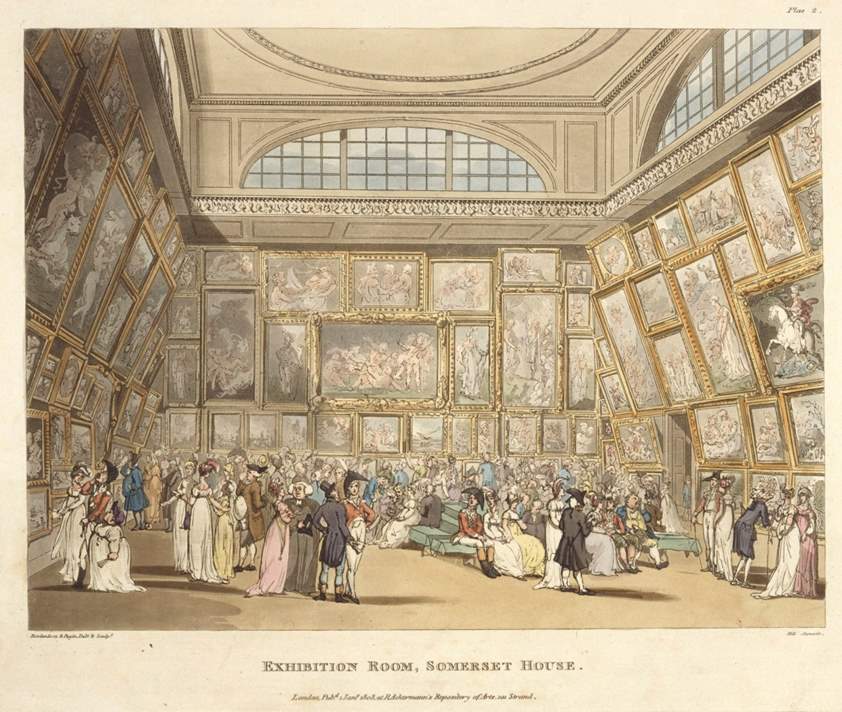
Fig. 4 Exhibition Room, Somerset House, 1 January 1808 from The Microcosm of London (1808-10)
Thomas Rowlandson (1757 – 1827) and Augustus Charles Pugin (1769 – 1832)
The education provided by art schools and colleges continued in an idiosyncratic fashion, with some trying to emulate the curriculum established by the Bauhaus School in the early in the 20th century. Until during the 1960s the type of education began to slowly evolve from an era where each institution taught to their own defined course structure. On the advice of Sir William Coldstream, the Diploma in Art and Design was introduced. Prior to this each educational authority awarded their own certificates, not normally of degree level, but of an intermediate standard, and were more concerned with the practical aspects of learning art, not the intellectual.
Further change was demanded by a student revolt at Hornsey School of Art in 1968. The student protests called for a review of the teaching programme. This was largely a generalised evaluation of the established art education regime, and the differing types of education offered to art students. The students wanted a less structured, more comprehensive, open style of learning, and a qualification of degree level. As Tom Holert stated in his article Art in the Knowledge-based Polis,
The participants in the Hornsey revolution of forty years ago had very strong ideas about what it meant to be an artist or an art student, about what was actually at stake in being called a designer or a painter. They were convinced that knowledge and knowledge communication within art education contained enormous flaws that had to be swept away. (E-flux.com, 2018)
The dispute essentially came from the conflict between vocational tuition, with increasing specialisation, and a general higher education requirement for a broad curriculum. (Llewellyn, 2015). Beginning in 1974 the Dip AD qualification, was converted to degree standard, reflecting the acknowledgment of the intellectual in art as a basis of study. It also placed art on the same level as other academic subjects within the arts, such as History or Philosophy. (Wright, 2018).
During the late 1980’s Goldsmiths School of Art introduced a ground-breaking teaching syllabus without a structured curriculum, developed by Jon Thompson, Head of the Fine Art department. It was an open approach where students were not channelled into segregated areas of learning. The students were taught that the art school was inclusive, that you could embrace any, or all of the art disciplines. That they could paint, sculpt or whatever inspired them, but also that they could become professional artists. (The Guardian, 2018)
Eventually, during the early 1990s some institutions began to gain the power to grant their own degrees, which in turn meant that they had to provide an education that met exacting academic standards, by this time all art schools were awarding their students with degrees, not all of which were under their own authority.
The Arts and Crafts Movement – The rescuing of craft skills
William Morris and his contemporaries who founded the Arts & Crafts movement were in part motivated as a judgement on the Industrial Revolution, which was changing manufacturing into an exclusively factory based activity. An object that was crafted was viewed as something that required skill, and they considered this was being lost. The conventional understanding was that craft should be governed by two principles; that the object produced should be equally decorative and practical.
Their views may have been romanticised, but they were driven by the pitfalls of increasing industrialisation across society in the 19th century. Their collective ambition was to find a less complicated, more satisfying way of life, both for themselves and the workers whose expertise they wished to preserve. The reasoning behind the Arts and Crafts movement was that the arrival of industrial revolution lead workers to being less creative, as factory based manufacturing meant that craft skills had been removed from construction processes. (Adams, 1987)
The general intentions of the founders of the movement were to put craft and design back into fabrication procedures, making them an essential part of the process. What was being attempted was to recreate a form of craft guild which endorsed and upheld the skills of the workers, a sort of prototype trade union. William Morris believed that factory made items did not possess the integrity or appealing quality of traditionally made objects, a point of view which was also endorsed by John Ruskin. As the influence of the Arts and Crafts design aesthetic grew, fashions changed to reflect their style, and architecture, furniture and the decorative arts began to show the character associated with that period. By the 1880’s the design approach of the Arts and Crafts movement was endorsed by the general public, and Morris was a prominent designer whose name became synonymous with the era. The desire of the founders of the movement was to prevent the skills used to make objects being lost forever. It also allowed for the advent of studio pottery, and various other craft based endeavours that followed, without which further innovations would not have been possible. Consequently these craft skills were saved for future generations to investigate, without them the arts and crafts debate would not even exist as a concept.
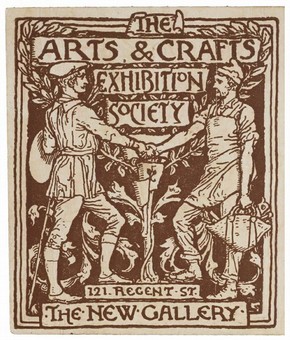
Fig.5 Detail from a season ticket for The Arts & Crafts Exhibition Society, by Walter Crane, England, UK, 1890. Museum no. E.4164-1915.
Skill based learning – The Importance of craft in art education
‘Proficiency in a craft is essential to every artist. Therein lies the prime source of creative imagination. Let us then create a new guild of craftsmen without the class distinctions that raise an arrogant barrier between craftsman and artist!’ Walter Gropius.
The Bauhaus School was founded in 1919 in Weimar by Walter Gropius. The course that was established was widely regarded as a prototype for art education, and was known for teaching combined crafts and the fine arts. The way in which the Bauhaus education was structured brought all disciplines together under one roof this meant they were then influenced by its overriding design aesthetic.
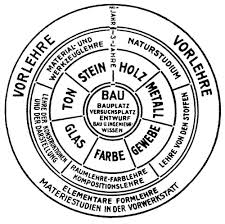
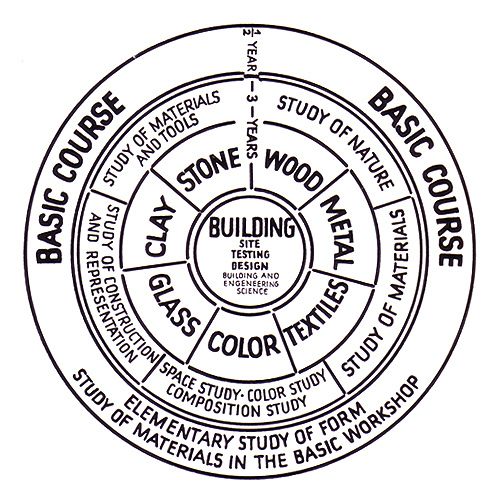
Fig 6. Design and form: the basic course at the Bauhaus Johannes Itten, published in 1923.
It should be noted that ‘Farbe’ can be translated from German to English, as both colour and paint, potentially changing the interpretation of this diagram.
This diagram presenting the structure of teaching at the Bauhaus School was produced by Gropius in 1922. Students at the beginning of their studies received training on the preliminary course when they were able to investigate colour, shape and materials without particular targets in mind. Depending upon aptitude and ability, students entered the workshops and their skills were examined within a given time period. Gropius developed the format of these courses, and therefore they were unique.
Initially the workshops for the secondary course, as with preliminary course, were under the guidance of Johannes Itten. The established teaching regime did not follow a traditional art curriculum, students were expected to create their designs based on their own point of view and design requirements. They were trained in craft techniques, and encouraged to explore materials appropriate to their personal projects.
The course designed for Bauhaus continues to be regarded as a gold standard in art education, although art is not universally taught according to this model. A contemporary foundation art course undoubtedly has its origins in the Bauhaus course, where students are exposed to many different methods of expressing themselves artistically through various materials, then allowed to pursue their chosen medium with further study. Once a student had chosen a pathway, skills instruction may or may not be part of the curriculum. The emphasis in learning is now generally placed on the student themselves, with personal exploration of skills required at the core. Bauhaus however, was attempting to recreate a craft guild, similar to the aims of the Arts and Crafts movement.
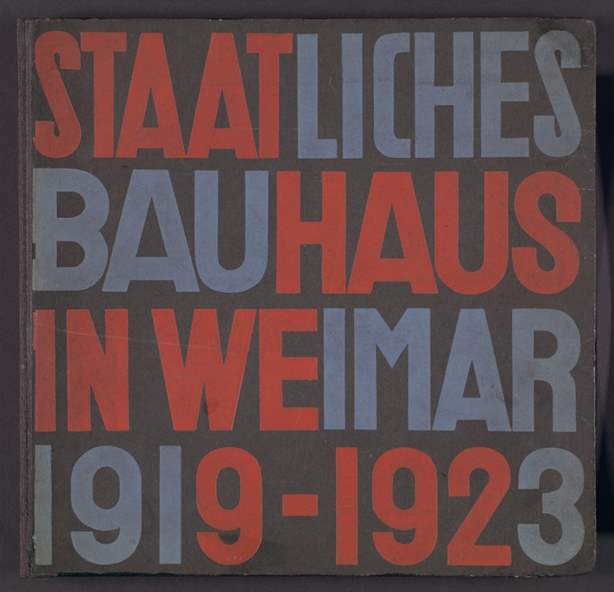
Fig. 7 Cover of the Bauhaus Exhibition Catalogue ‘Staatliches Bauhaus in Weimar 1919-1923’, cover design: Herbert Bayer / typograph: László Moholy-Nagy, 1923 / © VG Bild-Kunst, Bonn 2016.
Art schools continue to be places where the main focus is on the visual arts. They differ from other places of learning through this specialisation, without other related arts subjects. Originally this was a formal, strict task based education, with students completing the same assignments as each other in order to advance. However, the educational model of an art school today has become less to do with a learning based in studying particular skills, and more with the expression of concepts explored through whatever means chosen, which may require skill or not, or skill could be brought in as required. This is a legacy of the changes that were implemented at Goldsmiths College following a review by teaching staff, but this was also a consolidation of the transformation of art schools since the student revolution of the 1960s.
Call it art and that is what it becomes
The term ‘Readymade’ was appropriated by Marcel Duchamp in 1917 when his work Fountain was first exhibited. Marcel Duchamp’s friend Beatrice Wood said about the work.
Whether Mr Mutt with his own hands made the fountain or not has no importance. He CHOSE it. He took an ordinary article of life, placed it so that its useful significance disappeared under the new title and point of view—created a new thought for that object. (Mann, 2018).
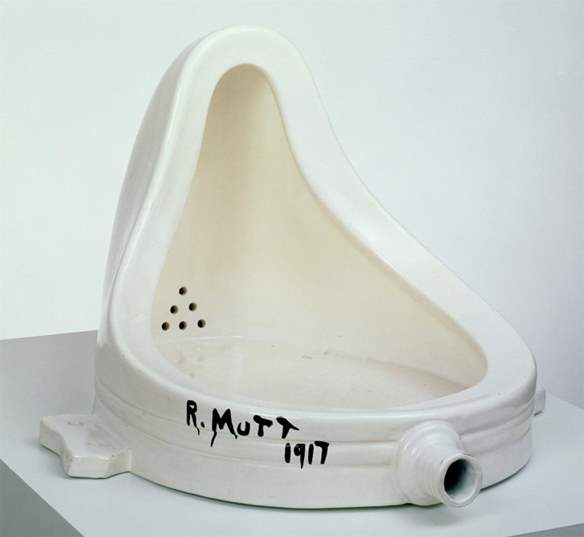
Fig.8 Marcel Duchamp Fountain 1917, replica 1964 Porcelain
The term ‘readymade’ has subsequently been applied more generally for work made from manufactured objects. Originally it was used to distinguish factory-produced goods, from those that were handmade or crafted. It was then adopted as a term used for conceptual art, and around the time this came into currency, art diverged from craft, and art education became less specific, and more theoretical.
The theory of applying a concept, or ‘new thought’ to art, endorsed the view that the idea was the heart of the work, meaning that the thought and preparation surrounding the concept were the core, and the implementation was subordinate. Therefore the inspiration takes precedence and the art that arises is an ancillary result. ‘Readymade’ gave rise to the theory of art being what the artist decided that it was, and researchers have discovered that by defining an object as ‘art’ subsequently changes how people regard it.
Sometimes it is thought that the main difference between traditional ways of creating art and more conceptual art forms is the application of learnt skills. This is however a generalisation, and it is untrue that all conceptual art lacks the application of skill. Although learnt skills and the making of conceptual art are often at odds. This idea has repercussions with regard to crafted objects – since they require learnt ability to be produced. Especially if they are to be regarded as art, in that it matters what an object is called because it effects how it is consequently perceived. (Whipple, 2018)
Art versus Craft
Modernism is a term used in both art and literature, which had its genesis as a designation of genre in the late 18th century. It is generally categorised by the rejection of past influences, and the accentuating of both innovation and investigation into all types of materials and techniques. The change was triggered by a desire to generate art that was felt to be of greater significance to modern society. This began before the turn of the 19th century, when art moved away from Realism, and splintered with the shift into Op art during the 1960s. Modernism was concerned with a rejection of the past, and of conservative values both in society and the art world, and was motivated by numerous social and political agendas. These were often idealistic, and the particular modernist amalgam of style is linked with optimistic versions of life, society, and a conviction in the importance of originality above everything else. The 1960s was when ‘modern’ was the prevailing concept, along with the theories put forward by the art critic Clement Greenberg.
The intellectualisation of art education could be linked to the advent of the concept of modern art, and also to changes within society in a post-World War environment. Individuals were no longer prepared to be defined by a societal hierarchical order, or to anything that restricted their own ideas, or personal freedom of expression. They sought both intellectual, and political independence. Students sought artistic autonomy, and the ability to determine their own learning path as one of the Hornsey students said, ‘We were not, after all, the complacent receivers of an inadequate educational system. We were actively concerned about our education and we wanted to participate.’ (E-flux.com, 2018). They were collectively prepared to stand up, and demand these things from those that had the power to make decisions concerning their educational future. Therefore the combination of the introduction of qualifications that demanded greater intellectual rigour, and an outlook in both society, and the art world that was less demanding of task learning, and more interested in self-expression provoked change. The drive to be more personally distinctive meant that a learning regime that commanded a heavily circumscribed method of tuition, where pupils became models of the school where they had been taught, was no longer acceptable. These changes were the genesis of the diminishment of teaching artisanal skills within art education. As the pursuit of the intellectual increased, the perceived inferiority of learnt craft proficiencies became greater. Craft skills became more closely linked with the abilities of a skilled worker, in a post arts and crafts movement environment than those of an artist. Art students did not want to be taught what were considered the old fashioned competencies of an artist, in rigid format, they wanted to be able to acquire what they needed by a flexible, personalised means of learning.
Richard Sennett, in The Craftsman states that ‘craft skills’ that have been observed to have been lost in patient care in the National Health Service, are as a result of a push for higher ‘institutional standards’. He highlights the perceived diminishment of ‘nursing craft’ (Sennett, p48 2008), though ‘craftsmanship’ is not the correct term as nursing was always regarded as a vocation, and changes within nursing care were as a result of an inward drive towards professionalism. However, the reasons behind the changes inside nursing are similar to those within art education. The way nurses were trained changed, they stopped being taught in an apprenticeship style, living on the hospital site, and being taught on the ward by qualified nurses. This method had meant greater patient contact, which was perceived as the ‘craft’ of nursing. Nurse training moved to the university campus, and time spent in hospital became more of a shadowing role. Without task-oriented teaching, patient contact diminished, but the qualification universally became degree standard. (Patterson, 2018)
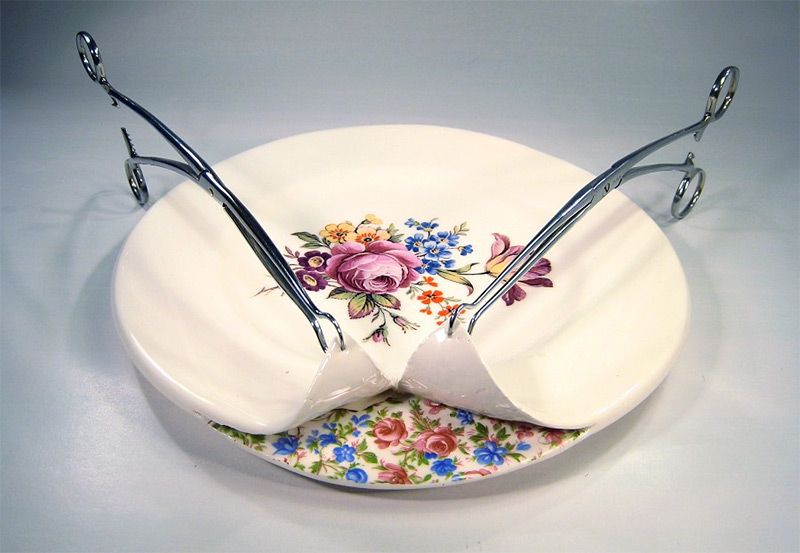
Fig.9 Art/Craft, Part of Installation – The Art/Craft Debate Using Ceramics Beccy Ridsdel 2014
This parallels art education, with the removal of task-orientated education, in a learning setting by use of the experiential method. This in both cases was sacrificed in order to promote a training with a higher level of intellectual achievement, with the awarding of a universal degree level qualification. Following the removal of ‘learning by doing’, and more time spent in theoretical learning, the so-called ‘craft’ element of both professions has been degraded, as being of less importance than that of higher intellectual standards.
All of these seemingly disparate ideas become relevant when addressing the art versus craft debate and its origins. The theory that art differs from the craft, and comes from the idea that art has creative merit that comes from within. A craft object is seen as being made with skill, requiring the application of technique which is acquired through practice, and is not necessarily expressing any other conceptual awareness. Art is viewed as a thing which expresses emotions, feelings and vision, whereas craft is seen as the creation of objects produced through learnt proficiency, the craftsmanship of the piece being perceived as more important than any story that the work itself may tell.
This means that with art education there is something less tangible about what is taught and learnt. The proficiency in a particular skill is something that is quantifiable, and can be measured by both teacher and student, on an achievement scale. The awarding a particular degree level is also quantifiable, but does not necessarily mean that any specific skills have been gained. The craft element has become identified with learning skills, and has consequently been sacrificed in order to secure a qualification that cannot be confused with that of an artisan. The rote learning of skills was also perceived as stifling creativity, and a looser learning structure based on self-discovery is considered the more modern approach.
Craft is historically understood to have a practical use, therefore it is not perceived as being fine art. According to interpretation of the 18th century Kantian principle, but following earlier theories, anything thought to be beautiful has no purpose other than the appreciation of its aesthetics. Kant states in his Critique of Judgement, ‘beauty is the form of purposiveness in an object so far as this form is perceived in it without the concept of a purpose’, he continues, ‘there are things in which we perceive a form without recognising their purpose’. (Kant, 2017) By which has been inferred that art objects should serve no practical purpose other than to be looked at and admired. Craft, when considered in traditional terms is assumed to be used; woodwork, fabrics or ceramics are designed to fulfil a function. Therefore, extrapolating from Kant they cannot be art no matter how well made or attractive they are. This means that craft conventionally has an operational value, or design value, but not one that is aesthetic. This may in part allow for the conflict between art and craft. In a hierarchical framework, craft was somehow perceived to be of lesser intellectual merit. (Risatti, 2007)
Alternately it might be said in order to uphold superiority, fine art has diminished craft skills to preserve the status quo. Craft might additionally be marginalised as it is perceived as a female domain, for example in the inaugural ‘Woman’s Hour Craft Prize’ in 2017, ten of the twelve finalists were women, and the eventual winner was female. However, overall the work was mostly conceptual, few entries were functional. (Victoria and Albert Museum, 2018). It is also notable that known artists that use craft skills to create their work, but are accepted into the fine art domain are typically male, for example Grayson Perry or Edmund de Waal.
There is a degree of condescension in the attitude of maintaining the separation of the artist and the artisan, the intellectual and the craftsperson. In Italy, where Renaissance Humanism was first acknowledged, craft traditions such as Murano glass, ceramics, and leather working are still highly valued, and are regarded as both innovative and collectable. There is as result a dilemma, that of a division that has been created between art and craft over time, but there also seems to be notable exceptions to the separation of these two aspects of the visual arts, which do not always appear to be consistent or quantifiable. It is a question that becomes a matter of personal taste and subjective judgement.
Art does not have to battle craft in order to prove that it is superior, and craft does not have to consider itself in any way lesser to fine art. They are in all ways equal, and they have to co-exist so that they are both able to survive. As Howard Risatti states in his book A Theory of Craft, ‘the term fine art itself is actually of fairly recent origin’, and continues, ‘the concepts of ‘art’ and ‘craft’ and even that of fine art are not universal but historically situated’ (Risatti, 2007) Meaning they are co-dependant, without each other the education that they provide may not be able to continue. But, an education that is able to combine both, the intellectual and the skills, in order to attract sufficient future students for courses to survive may have to be considered, in order to secure the future of art education as a whole.
We continue to be guided by Renaissance principles set out by Vasari, and his immediate predecessors more than 500 years ago which concerned the elevation of the visual arts to the same status as the seven liberal arts. This was so that artists would be regarded as the intellectual equals of authors. In the process of raising up the visuals arts of painting, sculpture, engraving and printing, the skills of the artisan were purposely denigrated and downgraded. Unfortunately this patronising standpoint founded in renaissance prejudice continues to endure. There is a condescending attitude apparent in the fine art tradition which allows the readymade to be acknowledged as art because the artist states it is, but displays no flexibility with regard to craft. Not all painting is fine art, not all found objects declared to be art are necessarily art, and not all craft objects are not art. Each object has to be considered and evaluated in turn, one whole genre cannot be rejected on the basis of a judgement taken many centuries ago, persisting through assumed superiority.
Conclusion
Politics has commodified education. For students deciding to go to university course selection is a crucial part of the process, and the related cost is an investment in their future. Students are being sold merchandise, and they consequently expect value for money, as they are committing to indebt themselves by thousands of pounds. The students of the sixties that demanded more self-determination had the financial freedom to do so, as their studies were financed by grants, which did not have to be repaid. Students now complain if lecturers strike, as they are losing something quantifiable, for which they have paid in advance. Undergraduates calculate how much each lecture costs, and the cost of their contact time. Whilst this may not be an ideal approach to higher education, it is the reality of a customer purchasing a product.
Since an arts degree no longer appears to be the choice that students paying high tuition fees select for higher education, should courses return to a more vocational, skill based learning, as a method of attracting students back onto art courses? If the goods are not flying off the shelves, rebranding might be necessary, or the product may cease to exist. However, the issue between art and craft appears to have more to do with an internal conflict, than with the anxieties of aspiring students. Since craft is once more surfacing as a significant participant in the creation of art, it will probably find its own way to survive without intervention. Student’s concerns seem to be more prosaic, they appear risk averse if there is not an obvious career pathway to justify their investment. To take an art degree, with a view to becoming an artist requires a leap of faith that is not quantifiable.
A professional artist may choose to work within a collective, or to work independently, and the education that an artist has received at art school should prepare them for either option. Principally, the instruction given is to train the mind, and prepare it to explore the possibilities of what might be made. Individuals can exploit the opportunities available for learning skills as they are able, and these will hopefully allow them to operate as autonomous practitioners. After a student has graduated, and that part of their formal education is complete, they are able pursue further study and/or practical tuition as their personal practice evolves, and changes. What is taught in art school is the beginning of a journey as an independent thinker and producer of art, and not the conclusion of one. The evolution of learning means that it will not be able to provide all things, but it is up each person to fulfil their own quest in order to discover the skills that they require in order to make what they have been inspired to create.
Universities have never been able to provide a learning pathway that is universally suited to every learner and all encompassing. Education is a constantly changing entity, governed by cost, fashion and research, but most of all by politics. It is not designed to suit the needs of an individual, instead the collective. It is reliant on each participant extracting what they need from the education that is provided, and then shaping it to their own needs. However, the provider of higher education has to be wary that what is delivered is not merely the least costly alternative. Workshop tuition is the more expensive option, than that of classroom or computer based provision. But, if all workshop based degrees are removed from a university selection of courses, then there will be no choice left. The options will have been removed by the tangible expense of providing something that requires greater one to one teaching, and more expensive space and equipment.
Degree providers need to be willing to make a judgement that if a course is created that fulfils current needs then students will come. Art schools need to listen to the student voice and then market accordingly. However it is vital that courses are known about and not hidden amongst many. Modern students choose to communicate differently, their instinct is to search electronically and not via an ordered paper prospectus. They use social media as a point of reference, therefore this needs to be utilised professionally in order to disseminate information. Universities need to be creative in order to discover what a prospective undergraduate requires from an art course, and not merely cut courses without significant reflection and correct evaluation. Cost cannot be the only consideration. If a course was offered but not well advertised, or easily digitally found, then it may never have been contemplated or even seen by a potential cohort (Reutersinstitute.politics.ox.ac.uk, 2018).
The conflict between art and craft should not mean that craft based skills no longer get taught at degree level, otherwise the expertise that is able to provide that education may be lost forever. Neither fine art nor craft alone should be the only route available; the ability to be able to select the option that best suits a prospective student, will mean more undergraduates choosing the visual arts, and that student retention may potentially be greater, with more students completing the degree course that they have chosen. The future of both art and craft will in turn have been rescued. In order to keep art courses open it is important that all branches of the arts stand together, and not allow a divisive ‘everyone for themselves’ environment to exist, where art and craft are cast as combatants. Visible internal conflict helps no one, and might be alienating to outsiders.
Recently there seems to be political will to alter the approach to higher education, with changes to the loan system, and a committee of MPs stating that there is no justification for such ‘high interest rates’ on student loans. (BBC News, 2018). Also a spokesman from the Department for Education stated a ‘major review’ would look at ‘funding across tertiary education to ensure a joined-up system that works for everyone’ (BBC News, 2018).
In a recent interview for The Times Damien Hinds, Minister for Education said ‘We have a system where you have got almost all institutions and almost all courses at those institutions charging exactly the same price’. He went on to say that universities will be directed to offer students ‘value for money’ arrangements, which would mean that tuition fees for arts and social science courses would be reduced, to encourage prospective students. (Sian Griffiths, 2018). We will have to wait to see if this edict has any effect, as without extra funding little may change. However, a fundamental alteration in attitude towards the arts from government will also have to take place, before arts courses stop being targeted for closure.
It is essential that the disciplines of fine art and craft attempt to find a cohesive approach in order to ensure the future of art schools. All of art education is currently at risk, from provision within schools up to degree level. The art establishment needs to endeavour to be unified in order to preserve learning provision across the arts in all of its diversity for future generations.
Bibliography
Books
Adams, S. (1987). The arts & crafts movement. London: Quantum Books Ltd.
Adamson, G. (2007). Thinking through craft. Oxford: Berg, in association with the Victoria and Albert Museum.
Addison, N. and Burgess, L. (2013). Debates in art and design education. London: Routledge.
Atkinson, D. (2002). Art in education. Dordrecht: Kluwer Academic Publishers.
Atkinson, D. and Dash, P. (2005). Social and critical practices in art education. Stoke-on-Trent: Trentham.
Crawford, M. (2010). The case for working with your hands, or, Why office work is bad for us and fixing things feels good. London: Viking.
D’Alleva, A. (2014). Methods & theories of art history. London: Laurence King
Dormer, P. (1997). The culture of craft. Manchester, UK: Manchester University Press.
Elkins, J. (2001). Why art cannot be taught. Urbana: University of Illinois Press.
Frayling, C. (2017). On Craftsmanship. [S.l.]: Oberon Books Ltd.
Kant, I. (2017). The Critique of Judgement. Lanham: Dancing Unicorn Books.
Korn, P. (2015). Why We Make Things and Why it Matters. London: Vintage.
Leonardo and Baring, M. (1906). Thoughts on art and life. New York: Merrymount Press.
Llewellyn, N. (2015). The London art schools. London: Tate Publishing.
Macdonald, S. (2004). The history and philosophy of art education. Cambridge: The Lutterworth Press.
Maclehose, L. (1907). Vasari on Technique. Glasgow: The University Press. R Maclehose & Co Ltd.
Madoff, S. (2009). Art School. Cambridge, Mass. MIT Press
The New Encyclopaedia Britannica. (1990). Chicago, IL: Encyclopaedia Britannica
Pye, D. (1968). The nature and art of workmanship. London: Cambridge U.P.
Risatti, H. (2007). A theory of craft. Chapel Hill: University of North Carolina Press.
Romans, M. (2005). Histories of art and design education: collected essays. Bristol [etc.]: Intellect.
Sennett, R. (2008). The craftsman. New Haven: Yale University Press.
Vasari, G. and De Vere, G. (1912). Lives of the most eminent painters, sculptors & architects. Orange, CT: Amity EBooks at Kindle.
White, K. (2011). 101 things to learn in art school. Cambridge, Mass.: MIT Press.
Yanagi, S. and Leach, B. (2013). The unknown craftsman. New York: Kodansha USA.
Websites
Adoptapotter.org.uk. (2018). Helping the next generation. [online] Available at: http://www.adoptapotter.org.uk/ [Accessed 22 Jan. 2018].
a-n The Artists Information Company. (2018). Anger and dismay at closure of Contemporary Crafts course – a-n The Artists Information Company. [online] Available at: https://www.a-n.co.uk/news/anger-and-dismay-at-closure-of-contemporary-crafts-course [Accessed 17 Feb. 2018].
Batty, D. (2018). Art schools face uncertain financial future. [online] The Guardian. Available at: https://www.theguardian.com/education/2011/apr/19/art-colleges-face-uncertain-financial-future [Accessed 23 Jan. 2018].
BBC News. (2018). Lecturers want ‘radical’ fee review. [online] Available at: http://www.bbc.co.uk/news/education-43075768 [Accessed 18 Feb. 2018].
BBC News. (2018). Day of reckoning for tuition fees? [online] Available at: http://www.bbc.co.uk/news/education-43031541 [Accessed 18 Feb. 2018].
Bstubbs.co.uk. (2018). A level National subject grade percentages. [online] Available at: http://www.bstubbs.co.uk/a-lev.htm [Accessed 17 Feb. 2018].
Dawood, S. (2018). Why are fewer students taking on art and design at university? – Design Week. [online] Design Week. Available at: https://www.designweek.co.uk/issues/6-12-february-2017/why-are-less-students-taking-on-art-design-at-university/ [Accessed 22 Jan. 2018].
Differencebetween.info. (2018). Difference between Art and Craft | Art vs Craft. [online] Available at: http://www.differencebetween.info/difference-between-art-and-craft [Accessed 6 Jan. 2018].
E-flux.com. (2018). Art in the Knowledge-based Polis – Journal #3 February 2009 – e-flux. [online] Available at: http://www.e-flux.com/journal/03/68537/art-in-the-knowledge-based-polis/ [Accessed 15 Feb. 2018].
England, H. (2018). Part-time – Higher Education Funding Council for England. [online] Hefce.ac.uk. Available at: http://www.hefce.ac.uk/analysis/HEinEngland/undergraduate/parttime/ [Accessed 24 Feb. 2018].
Sian Griffiths, T. (2018). Education secretary Damian Hinds: students to get cheaper places at university. [online] Thetimes.co.uk. Available at: https://www.thetimes.co.uk/article/education-secretary-damian-hinds-students-to-get-cheaper-places-at-university-htqxq326z [Accessed 18 Feb. 2018].
The Guardian. (2018). Schools of thought. [online] Available at: https://www.theguardian.com/theobserver/2000/mar/19/life1.lifemagazine17 [Accessed 15 Feb. 2018].
Mann, J. (2018). How Duchamp’s Urinal Changed Art Forever. [online] Artsy. Available at: https://www.artsy.net/article/artsy-editorial-duchamps-urinal-changed-art-forever [Accessed 24 Feb. 2018].
Patterson, C. (2018). Reforms in the 1990s were supposed to make nursing care better.. [online] The Independent. Available at: http://www.independent.co.uk/voices/commentators/christina-patterson/reforms-in-the-1990s-were-supposed-to-make-nursing-care-better-instead-theres-a-widely-shared-sense-7631273.html [Accessed 22 Jan. 2018].
Reutersinstitute.politics.ox.ac.uk. (2018). [online] Available at: https://reutersinstitute.politics.ox.ac.uk/sites/default/files/Digital%20News%20Report%202017%20web_0.pdf [Accessed 11 May 2018].
Tate. (2017). École des Beaux-Arts – Art Term | Tate. [online] Available at: http://tate.org.uk/art/art-terms/e/ecole-des-beaux-arts [Accessed 4 Dec. 2017].
UCAS. (2018). 2017 cycle applicant figures – June deadline. [online] Available at: https://www.ucas.com/corporate/data-and-analysis/ucas-undergraduate-releases/2017-cycle-applicant-figures-june-deadline-0 [Accessed 22 Jan. 2018].
Unesdoc.unesco.org. (2018). [online] Available at: http://unesdoc.unesco.org/images/0024/002431/243126e.pdf [Accessed 7 May 2018].
Universitiesuk.ac.uk. (2018). http://www.universitiesuk.ac.uk/facts-and-stats/data-and-analysis/Documents/patterns-and-trends-2017.pdf [Accessed 22 Jan. 2018].
Victoria and Albert Museum. (2018). V&A · About the Woman’s Hour Craft Prize. [online] Available at: https://www.vam.ac.uk/articles/about-the-womens-hour-craft-prize [Accessed 25 Feb. 2018].
Whipple, T. (2018). Call it art and that’s what it becomes. [online] Thetimes.co.uk. Available at: https://www.thetimes.co.uk/article/call-it-art-and-thats-what-it-becomes-gfkvrk3jm [Accessed 18 Feb. 2018].
Wright, N. (2018). What happened at Hornsey on 28 May 1968. [online] 21centurymanifesto. Available at: https://21centurymanifesto.wordpress.com/2012/05/28/what-happened-at-hornsey-on-28-may-1968/ [Accessed 15 Feb. 2018].
Tables
Table 1. Which degree to choose according to possible salary?
http://www.bbc.co.uk/news/education-41693230
Illustrations
Fig 1.Philosophia et septem artes liberales (Philosophy and the Seven Liberal Arts), as illustrated in Hortus deliciarum (Garden of Delights).
https://web.archive.org/web/20110720213646/http://bacm.creditmutuel.fr/HORTUS_DELICIARUM.html
Fig. 2. Interior of the Atelier workshop of Etienne Delaune.
Celebrated goldsmith of Paris. Date: 1576
http://www.britishmuseum.org/research/collection_online/collection_object_details/collection_image_gallery.aspx?assetId=37145001&objectId=1419428&partId=1
Fig. 3. École Royale Des Beaux-Arts Paris.
Original steel engraving, drawn by Roux, engraved by Le Petit. 1853
http://www.antique-prints.de/shop/catalog.php?cat=KAT32&product=P004619
Fig. 4 Exhibition Room, Somerset House, 1 January 1808
from The Microcosm of London (1808-10)
Thomas Rowlandson (1757 – 1827) and Augustus Charles Pugin (1769 – 1832)
http://www.britishmuseum.org/research/collection_online/collection_object_details.aspx?objectId=3270974&partId=1&people=110732&peoA=110732-2-23&page=1
Fig.5 Detail from a season ticket for The Arts & Crafts Exhibition Society, by Walter Crane, England, UK, 1890. Museum no. E.4164-1915. © Victoria & Albert Museum, London
http://www.vam.ac.uk/content/articles/t/the-arts-and-crafts-movement/
Fig 6. Design and form: the basic course at the Bauhaus School of Art.
Johannes Itten, published in 1923.
https://www.bauhaus.de/en/das_bauhaus/45_unterricht/
Fig. 7. Cover of the Bauhaus Exhibition Catalogue ‘Staatliches Bauhaus in Weimar 1919-1923’, cover design: Herbert Bayer / typograph: László Moholy-Nagy, 1923 / © VG Bild-Kunst, Bonn 2016.
https://www.bauhaus100.de/en/past/works/graphics-typography/umschlag-katalog-bauhaus-ausstellung/
Fig.8 Marcel Duchamp Fountain 1917, replica 1964
http://www.tate.org.uk/art/artworks/duchamp-fountain-t07573
Fig 9. The Art/Craft Debate Using Ceramics Beccy Ridsdel , Part of larger installation.
http://www.beccyridsdel.co.uk/page7.htm
Cite This Work
To export a reference to this article please select a referencing stye below:
Related Services
View allRelated Content
All TagsContent relating to: "Education"
Education is the process of teaching or learning, especially systematically during childhood and adolescence, in a school or college, or the knowledge that someone gains from this. Post study, education can mean the imparting or acquiring of specific knowledge or skills required for a task, or profession for example.
Related Articles
DMCA / Removal Request
If you are the original writer of this dissertation and no longer wish to have your work published on the UKDiss.com website then please:




